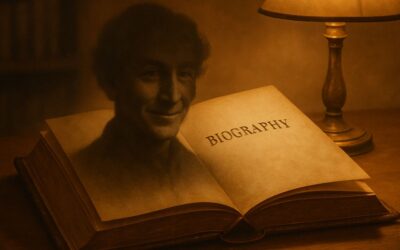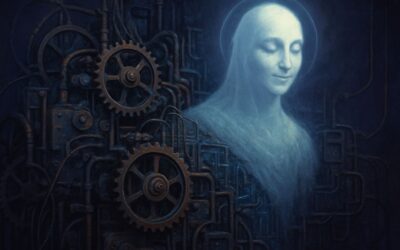Introduction
Leonardo da Vinci is widely considered to be one of the greatest geniuses in human history. Born in the Tuscan town of Vinci in 1452, he spent his early years learning the skills of a painter and sculptor, but he soon branched out into a vast range of other fields, including engineering, mathematics, anatomy, astronomy, and even music.
In this article, we will explore the life and achievements of this remarkable man, whose legacy continues to inspire and fascinate people to this day.
Early Life and Education
Leonardo was born out of wedlock to a notary, Ser Piero da Vinci, and a peasant woman, Caterina. His childhood was spent in Vinci, where he was brought up by his father and his stepmothers. Despite his illegitimacy, Leonardo was educated in the best schools of Florence, where he was exposed to the teachings of some of the most influential artists and thinkers of the day.
From an early age, Leonardo showed a remarkable talent for drawing and painting, and he soon became an apprentice to the renowned artist Andrea del Verrocchio. It was under Verrocchio’s tutelage that Leonardo learned the art of painting and sculpture, but he quickly began to show an interest in other fields, such as engineering and mathematics.
Artistic Achievements
Leonardo’s artistic career spanned several decades, during which he produced some of the most famous and iconic works in the history of art. Among his most famous paintings are the Mona Lisa, The Last Supper, and The Vitruvian Man.
The Mona Lisa is undoubtedly one of the most famous paintings in the world. Painted in the early 16th century, it is a portrait of a woman with an enigmatic smile, whose identity has remained a mystery for centuries. The painting’s composition and the use of chiaroscuro (a technique of using light and dark to create the illusion of depth) are considered to be masterpieces of art.
The Last Supper, a mural painting in Milan, depicts the scene of Jesus Christ’s last supper with his disciples. This painting is also famous for its innovative use of perspective, which gives the impression of a three-dimensional space.
The Vitruvian Man, a drawing in pen and ink on paper, is a study of the human body’s proportions, based on the principles of Vitruvius, a Roman architect and engineer. This drawing is a testament to Leonardo’s interest in science and anatomy, and it is considered to be one of the most famous illustrations of the human body in the world.
Engineering and Inventions
In addition to his artistic achievements, Leonardo was also a prolific inventor and engineer. His sketches and designs included ideas for flying machines, water pumps, and military weapons, many of which were ahead of their time and were only realized centuries later.
One of his most famous inventions was the flying machine, which he designed based on the anatomy of birds. Although he never built a functional flying machine himself, his designs inspired many future pioneers of aviation.
Another invention was the water pump, which he designed to lift water from rivers and canals for irrigation and other purposes. This invention had a profound impact on agriculture and industry, and it is still in use today.
Science and Anatomy
Leonardo was also a keen observer of the natural world, and he spent much of his life studying the anatomy of humans and animals. His drawings of the human body are considered to be some of the most accurate and detailed depictions of anatomy in the world.
He was also interested in geology, botany, and astronomy, and he made many important observations and discoveries in these fields. For example, he was one of the first people to recognize the concept of plate tectonics, which explains the movement of the earth’s crust, and he also made important discoveries in the field of optics, such as the principle of the camera obscura.
Legacy and Influence
Leonardo’s impact on art, science, and technology is difficult to overstate. His innovations and discoveries have had a lasting impact on many fields, and his legacy continues to inspire and influence people to this day.
In the world of art, his use of perspective, chiaroscuro, and other techniques revolutionized the way that painters and sculptors approached their craft, and his masterpieces continue to be admired and studied by artists and art lovers around the world.
In the fields of science and engineering, his inventions and discoveries paved the way for many of the technological advancements that we take for granted today, such as airplanes, helicopters, submarines, and the modern water pump.
Moreover, his curiosity, creativity, and determination to understand the natural world have served as an inspiration to many people over the centuries, and his example has encouraged countless individuals to pursue their own passions and interests.
Conclusion
Leonardo da Vinci was a true Renaissance man, whose impact on the world has been felt in many different fields. His achievements in art, science, engineering, and other areas are a testament to his remarkable intellect, creativity, and curiosity, and his legacy continues to inspire and fascinate people around the world.
From his iconic paintings to his groundbreaking inventions and discoveries, Leonardo’s influence can be seen in many aspects of modern life, and his example serves as a reminder of the power of human ingenuity and imagination.
Keywords:
- Renaissance: A period of cultural and artistic growth in Europe from the 14th to the 17th century, characterized by a renewed interest in classical art, literature, and learning.
- Geniuses: Individuals with exceptional intellectual or creative abilities, who are recognized for their achievements and contributions to their fields.
- Apprentice: A person who works for a skilled master to learn a trade or craft.
- Chiaroscuro: A technique of using light and dark to create the illusion of depth in a two-dimensional artwork.
- Mural: A painting or decoration applied directly to a wall or ceiling.
- Perspective: The technique of representing three-dimensional objects on a two-dimensional surface, in a way that creates the illusion of depth and space.
- Vitruvian Man: A drawing by Leonardo da Vinci, which depicts a male figure with outstretched arms and legs, based on the principles of Vitruvius, a Roman architect and engineer.
- Inventions: Novel ideas or devices that solve a practical problem or meet a need.
- Engineering: The application of scientific and mathematical principles to design, build, and maintain structures, machines, and systems.
- Flying machine: A vehicle designed to fly or glide through the air, such as an airplane, helicopter, or glider.
- Water pump: A device used to move water from one place to another, usually for irrigation, drainage, or drinking.
- Anatomy: The study of the structure and function of living organisms, especially the human body.
- Geology: The study of the physical structure, composition, and history of the Earth.
- Botany: The study of plants, including their structure, growth, reproduction, and classification.
- Astronomy: The study of celestial objects and phenomena, such as stars, planets, and galaxies.
- Plate tectonics: The theory that explains the movement and interactions of the Earth’s lithospheric plates, which form the planet’s crust and upper mantle.
- Renaissance man: A person who is knowledgeable and skilled in many different areas, such as art, science, literature, and philosophy.
- Creativity: The ability to generate novel and valuable ideas, concepts, or solutions.
- Curiosity: A strong desire to learn or know about something, often characterized by asking questions, exploring, and experimenting.
- Ingenuity: The ability to think creatively and come up with novel solutions to problems or challenges.











0 Comments